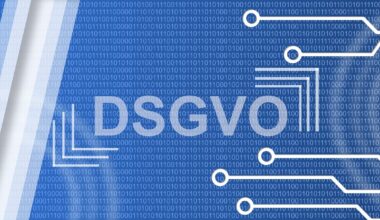Understanding Privacy Violations on Social Platforms
Privacy violations on social media platforms are serious occurrences that can have significant repercussions for individuals and organizations alike. These violations can include unauthorized data sharing, hacking incidents, or breaches of personal information. Recognizing the types of violations is crucial for an effective response. Ensuring a clear definition of what constitutes a violation is vital. Organizations should implement a strict social media policy which encompasses guidelines surrounding confidentiality and privacy. Consequences often stem from the mishandling of private information, leading to a loss of customer trust and potential legal issues. Immediate and transparent communication is vital when a privacy violation occurs. This helps maintain the organization’s reputation and ensures stakeholders feel valued and informed. It’s advisable for companies to train employees in recognizing potential threats and understanding their roles in protecting confidential information. Moreover, they ought to regularly update their policies to adapt to new challenges posed by evolving technology. Having a dedicated response team can greatly assist in navigating these situations with expertise and authority, making prompt and effective resolutions possible. Thus, proactive measures help avert potential privacy violations in social media.
Immediate Steps to Take
When faced with a privacy violation, several immediate steps must be undertaken to efficiently manage the situation. The first course of action is swiftly confirming the breach and understanding its scope. Engaging cybersecurity experts may be necessary to thoroughly assess the extent of the violation and its implications. Once the violation is confirmed, it is critical to inform all stakeholders affected by the incident. This includes customers, employees, and potentially the legal authorities. Transparency in communication is essential, helping to mitigate any distrust that may arise as a result of the violation. Moreover, organizations need to outline the specific measures they are undertaking to rectify the situation. Considering implementing additional security measures or refining existing policies can help demonstrate commitment to privacy protection. Providing affected parties with clear channels for support or further inquiries showcases a dedicated approach to resolving the issue. As organizations respond, tracking the incidents systematically will ensure valuable insights can be gathered for future prevention strategies. Adapting existing policies and practices based on learned experiences can greatly enhance organizational resilience against future violations.
Developing a Comprehensive Strategy
Having a detailed strategy in place for responding to privacy violations is crucial for any organization utilizing social media platforms. This strategy should encompass clear protocols indicating steps to be taken during a breach. It is vital to develop communication templates for notifying stakeholders promptly and effectively. Regularly reviewing and updating the strategy ensures that it remains relevant and effective against emerging threats. Employees must be trained not just on the policy but also on the importance of safeguarding personal data. Regular drills or simulations can enhance preparedness among teams, ensuring everyone is familiar with their roles during a privacy breach. Documentation of incidents must be thorough, enabling organizations to learn from each violation. Moreover, fostering a culture of privacy awareness within the organization contributes significantly to a proactive stance against potential violations. Engaging with compliance experts ensures the strategy aligns with regulatory requirements. Utilizing external resources, such as legal counsel, further enhances the depth of the strategy. Reexamining this strategy periodically enables necessary adjustments, ensuring continued adherence to best practices in the rapidly evolving landscape of social media privacy.
Monitoring social media channels rigorously plays a pivotal role in preventing privacy violations. By employing monitoring tools, organizations can gain insights into any unusual activities that may signal potential breaches. These tools help track and analyze user engagement, flagging anything that deviates from expected norms. Engaging in proactive monitoring allows organizations to respond swiftly to any disturbing trends, maintaining a secure environment for their users. It is crucial to empower employees with knowledge about sensitive information that should never be shared publicly. Training sessions centered around privacy best practices will enhance this knowledge. Furthermore, reinforcing a system of reporting suspicious activities can establish a culture of accountability among employees. Regularly updating social media policies helps keep the guidelines fresh and relevant amid shifting privacy landscapes. Clear communication regarding these policies fosters understanding and compliance. Utilization of analytics and reporting tools offers valuable data regarding user interactions and potential threats. Organizations must prioritize privacy by integrating it into their social media strategies thoroughly. By prioritizing ongoing evaluations of monitoring practices, companies can fortify their defenses against privacy violations.
Engaging with Stakeholders
Effective engagement with stakeholders is crucial in the event of a privacy violation. Organizations should prioritize transparent communication when informing users about the violation’s nature and extent. Providing clear and concise information alleviates confusion and anxiety among affected parties. It is important to establish a dedicated communication channel to streamline inquiries from stakeholders, ensuring timely responses. Listening to user concerns serves to strengthen relationships while illustrating the organization’s commitment to maintain trust. Additionally, soliciting feedback from affected individuals post-incident delivers insights into their experiences and concerns. This feedback can become a cornerstone for future policy enhancements, increasing overall effectiveness. Often, stakeholders appreciate acknowledgment of the issue and proactive measures taken to rectify it. Further, establishing clear protocols for customers to follow in light of the incident reassures them of the organization’s commitment to protecting privacy. Creating a support team ready to address any ambiguities surrounding the incident is vital too. Lastly, engaging stakeholders in a constructive dialogue builds a sense of community, encouraging shared responsibility in mitigating future incidents and fostering a stronger organizational reputation in the long term.
In instances of privacy violations, legal ramifications often accompany the fallout. Thus, it is essential to consult legal counsel promptly to understand the implications of the breach. Organizations must ensure compliance with both local and international regulations to mitigate risks. Mismanagement can lead to significant legal penalties. Being transparent about the violation with relevant authorities aids in building trust and demonstrating accountability. Organizations should prepare for potential inquiries or investigations following an incident. Additionally, notifying users, as required by law, about potential risks associated with the breach is vital for compliance and ethics. When legal processes are underway, maintaining open communication will instill confidence among stakeholders. Investments in legal advice and expertise lend substantial credibility to the organization’s response efforts. Documenting every step taken post-violation will contribute to organizational integrity, showcasing diligence and responsiveness. Prioritizing legal compliance when addressing privacy violations can significantly reduce potential liabilities down the line. Overall, investing in ongoing legal education for employees strengthens the organization’s framework against future risks, ensuring its resilience in an ever-evolving digital landscape.
Continuously Improving Policy
Privacy policies must be living documents that evolve with technological advancements and changing societal expectations. Organizations need to periodically review their policies to integrate new trends and regulations influencing social media use. Engaging with privacy experts when refining policies ensures expertise is embedded in organizational practices. Regular audits of data handling practices provide insights into possible vulnerabilities. These audits also assess the effective implementation of existing privacy measures, highlighting areas for improvement. Developing an inclusive feedback mechanism allows employees and users to contribute to policy revisions actively. This collaborative approach encourages a culture of vigilance surrounding privacy concerns. Additionally, training sessions regarding updated policies are essential for maintaining employee knowledge and compliance. Reinforcing the significance of ongoing education instills a sense of responsibility towards privacy practices. Creating an adaptable framework for addressing privacy challenges enhances an organization’s response capacity, ensuring resilience. By consistently seeking improvement through feedback and audits, organizations can stay ahead of potential privacy violations, fostering trust and confidence among users. The organization’s dedication to ongoing enhancement will inevitably reflect its reputation, setting a benchmark in privacy protection.
Ultimately, effective responses to privacy violations on social platforms are essential in ensuring organizational integrity and user trust. Organizations must embrace a proactive stance in safeguarding confidential information, emphasizing preparedness at every level. Establishing robust policies, rigorous monitoring practices, and ongoing training creates a comprehensive safety net against potential breaches. Furthermore, engaging stakeholders in open dialogues enhances relationships while acknowledging their concerns. Legal compliance solidifies the organization’s commitment to ethical standards, providing reassurance amidst potential crisis scenarios. Moreover, recognizing the geometric nature of privacy violations necessitates continuous reflection and improvement. By diligently reassessing their practices, organizations can not only mitigate risks but can become leaders in privacy protection practices. Growth arises from difficulties, allowing organizations to emerge stronger from privacy violations. In the rapidly changing landscape of digital interactions, effectively managing privacy concerns shall serve as a testament to organizational resilience. Overall, organizations dedicated to evolving their privacy practices will find themselves well-positioned for future success, garnering trust and loyalty from their stakeholders. Building a reputation as a conscientious entity remains possible by understanding the gravity of privacy violations and responding effectively. By embodying these principles, organizations can safely navigate the complexities of social media and privacy.


